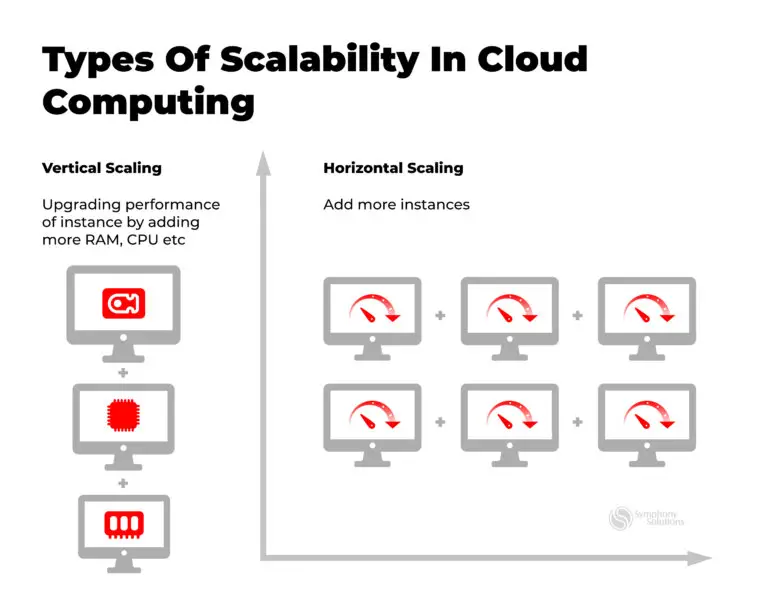Scalability Solutions: How New Cryptocurrencies Are Addressing Growth Challenges

As the popularity of cryptocurrencies continues to grow, one of the biggest challenges facing the industry is scalability. The current blockchain networks are simply not able to handle the large number of transactions that are being processed. This is causing delays, high fees, and other problems that are making it difficult for people to use cryptocurrencies in everyday life.

Several new cryptocurrencies are emerging that are specifically designed to address the scalability challenges facing the blockchain industry. These cryptocurrencies are using different approaches to improve scalability, such as:

-
Increased block size: One way to improve scalability is to increase the block size. This allows more transactions to be processed in each block, which reduces the time and cost of processing transactions.
-
Sharding: Sharding is a technique that divides the blockchain into multiple smaller parts. This allows different parts of the blockchain to process transactions independently, which can significantly improve scalability.
-
Off-chain transactions: Off-chain transactions are transactions that are processed outside of the blockchain. This can help to reduce the load on the blockchain and improve scalability.
Here are some specific examples of new cryptocurrencies that are using innovative approaches to improve scalability:
-
Ethereum 2.0: Ethereum 2.0 is a major upgrade to the Ethereum blockchain that is expected to significantly improve scalability. Ethereum 2.0 will use sharding to divide the blockchain into 64 smaller parts. This will allow the blockchain to process more transactions in parallel, which will reduce the time and cost of processing transactions.
-
Solana: Solana is a new cryptocurrency that is designed to be scalable from the ground up. Solana uses a unique consensus mechanism called Proof of History to validate transactions. This allows Solana to process transactions much faster than other cryptocurrencies.
-
Cardano: Cardano is a new cryptocurrency that is designed to be both scalable and secure. Cardano uses a unique consensus mechanism called Ouroboros to validate transactions. This allows Cardano to process transactions quickly and securely.
These are just a few examples of the many new cryptocurrencies that are emerging to address the scalability challenges facing the blockchain industry. As these cryptocurrencies continue to develop, they have the potential to make cryptocurrencies more accessible and easier to use for everyone.## Scalability Solutions: How New Cryptocurrencies Are Addressing Growth Challenges
Executive Summary
Cryptocurrencies are rapidly gaining popularity as a means of payment and investment. However, the scalability of many existing cryptocurrencies is a major concern, as they can often only handle a limited number of transactions per second. This can lead to congestion, slow transaction times, and high fees.
New cryptocurrencies are being developed to address the scalability challenges of existing cryptocurrencies. These new cryptocurrencies use a variety of different approaches to improve scalability, such as increasing the block size, using off-chain transactions, and implementing sharding.
In this article, we will discuss the different scalability solutions that are being used by new cryptocurrencies. We will also provide an overview of the different cryptocurrencies that are using these solutions.
Introduction
Cryptocurrencies are a new and exciting technology with the potential to revolutionize the way we think about money and finance. However, the scalability of many existing cryptocurrencies is a major concern. Scalability refers to the ability of a cryptocurrency to handle a large number of transactions per second. Many existing cryptocurrencies can only handle a few hundred transactions per second, which is not enough to support widespread adoption.
New cryptocurrencies are being developed to address the scalability challenges of existing cryptocurrencies. These new cryptocurrencies use a variety of different approaches to improve scalability, such as increasing the block size, using off-chain transactions, and implementing sharding.
In this article, we will discuss the different scalability solutions that are being used by new cryptocurrencies. We will also provide an overview of the different cryptocurrencies that are using these solutions.
FAQs
What is scalability?
Scalability refers to the ability of a cryptocurrency to handle a large number of transactions per second. A cryptocurrency is considered scalable if it can handle a high volume of transactions without experiencing significant delays or fees.
Why is scalability important?
Scalability is important because it allows a cryptocurrency to support widespread adoption. If a cryptocurrency is not scalable, it will not be able to handle the large number of transactions that would be required for it to be widely used.
What are the different scalability solutions that are being used by new cryptocurrencies?
There are a variety of different scalability solutions that are being used by new cryptocurrencies. These solutions include increasing the block size, using off-chain transactions, and implementing sharding.
Sharding
Sharding is a technique that can be used to improve the scalability of a blockchain. Sharding involves dividing the blockchain into smaller, more manageable pieces called shards. Each shard is responsible for processing a subset of the transactions on the blockchain. This allows the blockchain to handle a larger number of transactions per second.
Important pieces of sharding:
- Shards are independent of each other. This means that they can process transactions in parallel, which can significantly improve the scalability of the blockchain.
- Shards are responsible for a subset of the transactions on the blockchain. This means that each shard only needs to process a fraction of the total number of transactions, which can reduce the load on each shard.
- Shards can be added or removed from the blockchain as needed. This allows the blockchain to scale up or down as needed to meet the demand for transactions.
Off-Chain Transactions
Off-chain transactions are transactions that are processed outside of the blockchain. This can be done through a variety of different methods, such as using a payment channel or a sidechain. Off-chain transactions can help to improve the scalability of a blockchain by reducing the number of transactions that need to be processed on the blockchain.
Important pieces of off-chain transactions:
- Off-chain transactions are faster than on-chain transactions. This is because off-chain transactions do not need to be verified by the entire network, which can take a significant amount of time.
- Off-chain transactions are cheaper than on-chain transactions. This is because off-chain transactions do not require the payment of a transaction fee.
- Off-chain transactions are not as secure as on-chain transactions. This is because off-chain transactions are not recorded on the blockchain, which makes them more vulnerable to attack.
Increasing the Block Size
Increasing the block size is a simple way to improve the scalability of a blockchain. By increasing the block size, the blockchain can accommodate more transactions per block. This can lead to a significant increase in the number of transactions that can be processed per second.
Important pieces of increasing the block size:
- Increasing the block size can improve the scalability of a blockchain. This is because a larger block size can accommodate more transactions per block.
- Increasing the block size can lead to longer block times. This is because a larger block size takes longer to verify and add to the blockchain.
- Increasing the block size can make the blockchain more vulnerable to attack. This is because a larger block size can make it easier for attackers to double-spend transactions.
Conclusion
The scalability of cryptocurrencies is a major concern, as it could limit the widespread adoption of cryptocurrencies. New cryptocurrencies are being developed to address the scalability challenges of existing cryptocurrencies. These new cryptocurrencies use a variety of different approaches to improve scalability, such as increasing the block size, using off-chain transactions, and implementing sharding.
It is important to note that there is no one-size-fits-all solution to the scalability challenge. The best approach for a particular cryptocurrency will depend on its specific needs and requirements.
Keyword Tags
- Scalability
- Cryptocurrency
- Blockchain
- Sharding
- Off-chain transactions
